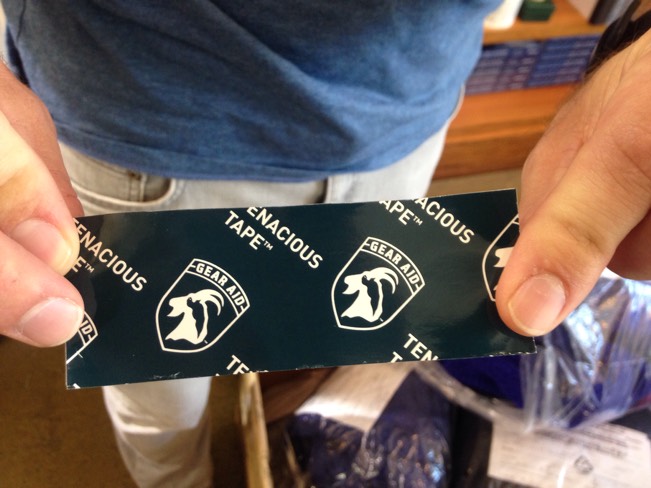
It was a few weeks ago, during an annual open street festival called Grand Old Days here in Saint Paul, MN, that I decided to pop into my local Patagonia store. I had heard they would have some lightly used and repaired items for sale in store for one day only to promote their Worn Wear initiative. Patagonia has long advocated that their clothing is not only built to last but should be repaired when wear or tear does occur, instead of replacement. They really do want you to use their stuff until it is all used up. If you can’t use it, they ask that you bring it back to them and they will repair and refurbish it to be passed on to someone that will. It is one of the many reasons I’m a fan of the company and their clothing and gear.
I perused the sale racks and, while there were plenty of good deals, I didn’t find anything I truly needed. So, I proceeded towards the exit.
On my way out one of the sales associates asked if I was able to find what I was looking for. I explained I was just browsing, had heard about the special Worn Wear sale event and thought I would check it out but didn’t find anything.
Then, he pointed to an area in the corner of the store that had a couple of people in it, a rack of miscellaneous items of clothing, and a table with a sewing machine and said, "See that guy in the blue shirt over there? That’s Andrew. He’s with our Worn Wear team. They’re doing something special today. If you go talk to him, he’ll let you pick an item in need of repair off the rack over there and show you how to repair it. What you pick and repair is yours to keep, free of charge."
I gave him my "Seriously?!?" look.
"For real! " he said. "Go talk to Andrew and let him know I sent you over."
So, to Andrew I went. Andrew repeated what they were up to and it was just as his partner at the door said. He was with a special Worn Wear team that was traveling to ious stores around the country. They’re selecting people at random and showing them how easy it was to repair Patagonia clothing. In doing so, they were hoping to plant the seed and spread the word about repair and recycling of clothing and gear versus replacing them. Today was my lucky day, he said. He asked my size and pulled some things out from the rack. Nothing at Patagonia could be considered inexpensive and much of the stuff on this rack was in the $200 – $300 dollar range. Everything on there needed some repair, some minor and some a bit more major. Ultimately, I picked a Torrentshell Jacket — their best selling rain jacket. It had a small 2-3 inch rip just to the back of the left side. Andrew said it would be a pretty easy repair and, well, I didn’t have a real raincoat so it was something I was likely to use.

To repair the rip, Andrew suggested a strip of something called Tenacious Tape. It’s a super strong adhesive tape designed to fix rips, holes and gashes in outdoor gear. Therefore, it was perfect for repairing a rip in a rain coat. We eyeballed the length of tape needed against the rip and cut off a piece slightly longer than the rip. Andrew then had me cut the short ends of the tape oval — which reduces the chance of a corner getting pulled up and the tape coming off. Then, we laid the section of the jacket to be repaired nice and flat on the table. The trickiest part was trying to peel off the tape backing with no corners to manipulate while also doing all I could not to get the oils of my fingers on the adhesive, which would compromise the seal. But, eventually with Andrew’s help I got it, pressed it on, held it for a few minutes while it bonded, and, voila! One used, repaired, but still in fantastic shape rain jacket was all mine to keep.

Dare I say, jt has come in very handy in the past few weeks I’ve had it. We’ve had several large rain storms pass through and this jacket has been through the thick of them. It’s great. it packs up into it’s own pocket for easy storage and travel. It has two large side zip pockets (one with a carabiner clip-in loop) that will keep your hands and/or gear nice and dry. And pit zips to keep it from getting too clammy in warm weather. The hood even has a built in visor to help keep the rain off of the face.

The moral of this story though is how great of a company Patagonia is for putting their money where their mouth is when it comes to this stuff. For further inspiration read the many stories on their Worn Wear site of the people who own Patagonia gear that has lasted, broke down, been put back together, passed down for generations, or otherwise been used well beyond expectations. This experience has certainly made me an even bigger fan and made a big impact on me to keep clothing reuse and repair in the front of mind. Going forward, when I run into anything with a rip, stain, or blemish, I’ll look towards how to make it better.